
Top US Magazine on Uganda: 'You Need to Visit the Garden of Africa in 2020'
Written by Harper's Bazaar
What no one tells you about Uganda is how green it is. The garden of Africa, it's a shock of emerald flora. Roads are lined by mango, jackfruit and banana trees, humpy hills form shamrock-coloured tea and coffee plantations and lakes and rivers are flanked by clumps of tall elephant grass. Its tangles of dense jungle and forests lay home to some of the world's favourite primates and its plains are decorated with acacia trees and thickets of grassland. This swathe of greenery is juxtaposed with red soil, considered among the planet's most fertile. Compared to its neighbours, Sudan, Kenya and Tanzania, Uganda is a garden of fecundity. Plant something in Uganda and it can't help itself but grow.
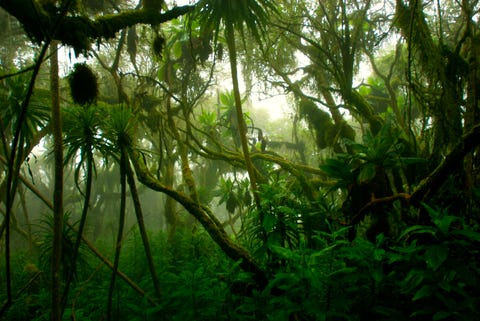
The list of Ugandan exports is lengthy - coffee is the biggest, followed by legumes - mangos, bananas, cassava, avocados, papaya, oranges, maize and pineapples. Tea is also a growing market, as well as cacao. There are two rainy seasons in Uganda, so water is always in abundance. Try as the country's former political leaders might (and truly these were a special, next level brand of brutal authoritarian monster), Uganda is a prime, albeit rare example of African prosperity.
Despite its aesthetic gifts, Uganda doesn't rank as highly with tourists as other African superstar spots, such as Kenya, Botswana or Tanzania. Even the neighbouring Rwanda is rising in the minds of international visitors, thanks to its gorilla stronghold. Although tourism is increasing - up by 32 per cent in the last two years - this south-east-African state still remains an unsung treasure of its continent. Add it to your travel inspiration list for 2020; a trip to Uganda is a trip of a lifetime.
Gorilla tracking
Gorillas are the rock stars of Uganda. A silver back has more swagger and presence than Keith Richards and Mick Jagger combined, a statement that neither could possibly argue with. Rwanda has built a name for itself as a mecca for these beautiful animals, but Uganda is home to the highest number. There are 1,007 mountain gorillas left in the world and over half of those live in Uganda's Bwindi Impenetrable National Forest, a 331-square-foot sprawling mass of jungle in the south-west of the country. Over 120 mammals and 350 bird species call this World Heritage-listed site home, but the biggest draw are the mountain gorillas. Small groups of tourists are taken by experienced guides and rangers deep into the forest every day to spend a tightly monitored hour in the company of these animals (any longer causes stress to the gorillas).
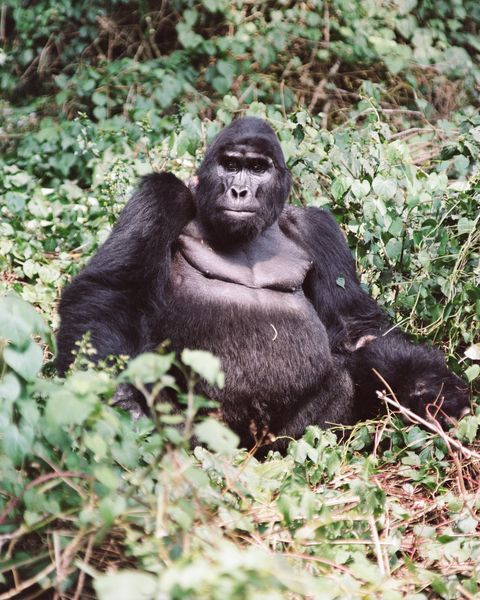
The treks are varying lengths according to fitness ability, so make sure you're honest about any physical limitations before you begin, lest you end up being carried down the rocky terrain on a stretcher. The gorillas have been habituated - a sensitively handled process which takes up to a year or more - which means they are comfortable and at ease around humans. The tracking experience is an open door to seeing these primates in their natural habitat and the trek to reach them is wild enough itself; some of the flora is so dense, rangers have to cut it back with machetes. There are no footpaths or clear routes, just the rangers following their intuition as you scramble behind them.
Once you reach the gorillas, although you know it's coming, it's impossible not to feel overwhelmed by their presence. Gorillas share 98 per cent of their DNA with humans, so watching them is like looking in the mirror. Their behaviours and body language and routines are so much like us it's unnerving - the baby gorillas wrestle with one another until one of them gets tired and goes to cuddle his mother. Another mother breastfeeds her infant. One of the adult males tries to sleep while the commotion goes on around him. A silver back - who is enormous in size both in height and waist - climbs up a tree to grab some food. He is the first sight we see, and - as the group grabs their phones in unison - he stares back with a mix of rightful superiority and boredom. The food is far more interesting to him. Visitors are instructed to stay seven metres away from the gorillas, yet still the close proximity is remarkable. No flash photography is permitted, and visitors are advised not to look directly at the gorillas to prevent them from becoming agitated. The hour spent with these creatures goes past in a flash, and you'll spend the trek back through the forest feeling a mix of overwhelmed and privileged. This is a once-in-a-lifetime experience that can't help but move you.
Game safari
Gorilla tourism might be the main attraction in Uganda, but its range of national parks inhabit a wide range of mammals well worth seeing. The Queen Elizabeth National Park is the most popular, but even then, the numbers of jeeps carrying tourists is nominal. Hippos, elephants, and leopards all live here, but the star of the show is the tree-climbing lion. Apparently, all lions can climb trees, but most choose not to. It's as if they realise that, on top of their numerous genetic strengths, this would just be a step too far in terms of natural born advantages. The tree-climbing lions are largely found in the Isasha sector of the park where you'll be in with a chance of seeing them lazily draped across tree branches. Some use the shady candelabra trees as a cool sleeping spot while others take advantage of the high level as a great way of spotting potential food on the plains below. Given that lions typically sleep 20 hours a day, it's not hard to see the appeal in resting among the wide branches of the trees here, among the sweet-smelling figs, away from the heat and the pesky tsetse flies that like to bite them at ground level.

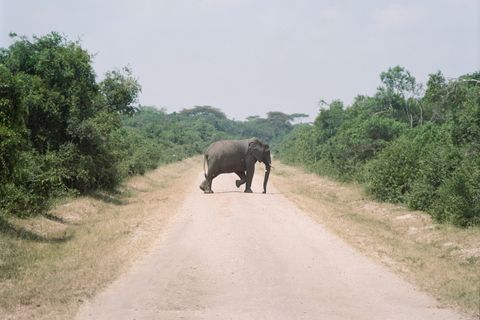
As the game drive continues visitors are also likely to see the impressively sized hippos, who happily wallow in the rivers and lakes to keep cool. Elephants are always a spectacular sight, and they roam in abundance here. It's not uncommon to have to stop the car so that a parade of elephants cross over in front of you. Also deserving of a mention is the crested crane, the national bird of Uganda occupying a prime position on its flag. It wears a crown of stiff golden feathers not unlike David Bowie's orange mullet in his Starman years. Its other Bowie-shared trait is that crested cranes love to dance, which involves a lot of jumping up and down and splaying of its wings. This usually happens as a breeding ritual, but cranes aren't averse to dancing at other times of the year too.
Arts and crafts
Arts and crafts are a mainstay of Ugandan culture and anyone who goes home with a piece made by one of the country's numerous artisans and craftspeople not only boosts the finances of local families, but also shows an appreciation for the experiences and skills of the Ugandan people. Basket weaving is a long-standing crafts profession, and the results are exported around the world. Made using banana leaves, raffia, palm leaves, papyrus and roots of plants, the baskets - which can be purely decorative or highly functional - are then dyed naturally and without chemicals.
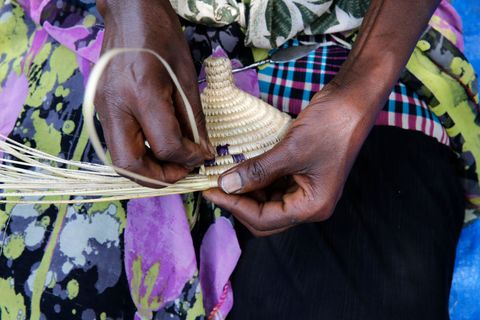
Basket-weaving is a tradition passed down from generation to generation, and the same skills are applied when making place mats and interior decorations. Charitable organisation Ride 4 Women, which offers employment to survivors of domestic abuse, runs an online shop which sells some of these beautiful baskets, along with a selection of clothing, cushion covers and bags made using traditional Ugandan fabrics. Woodwork and pottery are also long-standing practices, and used to create cups, vases trays, bowls and plates. In terms of art, look out for pieces made using banana fibres and raffia depicting everyday Ugandan life - beautiful keepsakes to bring home. Toy-making is also big in Uganda - children traditionally make their own using whatever materials they can get their hands on, be it footballs made from grass and papyrus or dolls made from banana leaves. Ask your hotel about local markets whereby money will go directly back to the community.
Excellent food
Ugandan cuisine is known for its freshness and characterised by its Arab and Indian influences. The staple food is matoke, a starchy type of banana that is the Ugandan equivalent of a potato – it’s usually boiled and mashed, then served with a nutty sauce, often Binyebwa. Matoke is also served in crisps form, a great addition to a day’s trekking. The ‘rolex’ is one of Uganda’s better-known dishes, a rolled chapati containing an omelette and vegetables, served usually for lunch or as a snack.
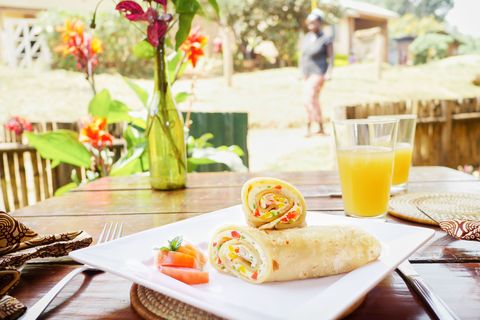
Chapatis are commonplace on most Ugandan dinner tables, reflecting the blend of culinary influences. Ugali is the standard breakfast of choice, a thick cornmeal porridge made from white maize and often served with fresh fruit. Slowly cooked stews are big news, usually with a peanut or chicken base, served with plantain or matoke. Luwombo is the crème de la crème of these stews, often served during special occasions, whereby chicken, beef, goat or fish is enveloped in a banana leaf and steamed over a course of ideally six hours. Not only is it a nutritious dish, but it’s also a delicious one - don’t leave Uganda without trying it. The Ugandans also do an excellent curry – delicately spiced fish sauces sit on top of rice and plantain. Diverse, healthy and fresh, Ugandan food is a surprise treat.
WHERE TO STAY:
Volcanoes Safaris has three luxury lodges scattered across Uganda and one in Rwanda, each next to a leading gorilla or chimpanzee park. Bwindi Lodge is so close to the famed Bwindi Impenetrable Forest, it feels as if you're inside it. Each of the nine bandas offers a view of the forest, often with sightings of baboons, monkeys and unusual birds. The decor is traditional safari with four poster beds covered with muslin, and seating areas, some with open fireplaces. The communal area is dominated by a large firepit, perfect to drink red wine by during cooler evenings, and the lounging sofas again look out onto the forest. The restaurant serves local dishes, starring an unforgettable creamy fish curry, and room service is available should you want to eat privately.

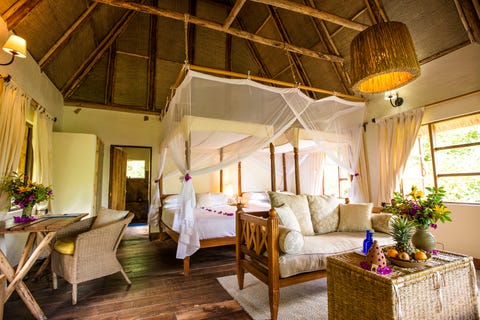
One of the highlights of Bwindi Lodge is its close proximity to the village, home to a selection of beautiful craft shops, as well as the Bwindi Bar, which the company established as a way of training disadvantaged youths in hospitality. Guests can try making a rolex wrap, or just to sit back and enjoy a local beer. Bwindi's Tea Project tour also makes for an interesting afternoon, as an expert talks guests through the tea-making process.
Volcanoes Safaris offers car transportation to its other outposts, including Kyambura which sits overlooking the savannah. It's a long six-hour drive from Bwindi, but incorporate a game drive through Queen Elizabeth National Park and you'll soon forget the distance. Kyambura is different in style to Bwindi with a more modern feel - think of it as the Ugandan version of Soho Farmhouse. Each banda is beautifully decorated with a mix of local homewares that you'll want to source yourself. They all house indoor and outdoor showers, ideal for those who don't want to miss a minute of those views.
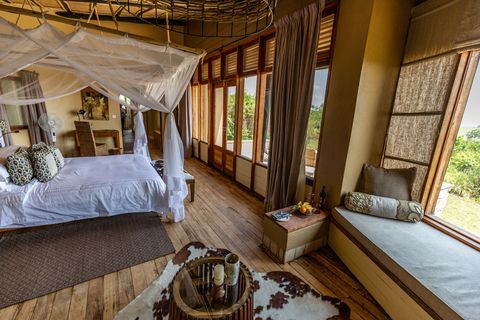
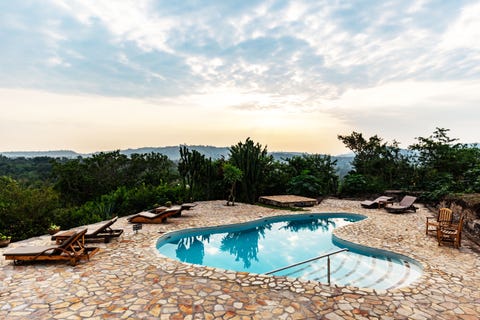
A picturesque pool overlooks the Kyambura Gorge, and staff will happily bring you a glass of wine or a beer to top off an afternoon in the sun. Stay until sunset, which is truly jaw-dropping. Like Bwindi Lodge, Kyambura is also firmly entrenched in the local community. Break up a day chimp tracking (Kyambura Gorge is a prime spot for chimps), with a walk down to Volcanoes' Coffee Cafe, which is run by locals, or partake in its long-term conservative project by planting a seedling in the gorge buffer zone. Both lodges boast spas, perfect for unwinding with a massage after a long day trekking.
Three nights at Kyambura Gorge and three nights at Bwindi Lodge including a gorilla trek, chimp trek and Kazinga Channel Boat cruise including all meals, drinks, transfers, internal flights and international flights on Kenya Airways from Heathrow would cost from £5,300 per person with Africa Odyssey.
Links
- 599 views






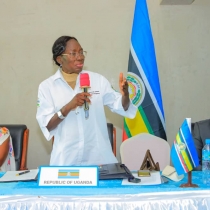


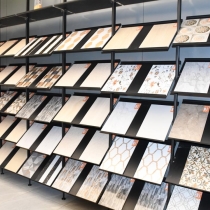








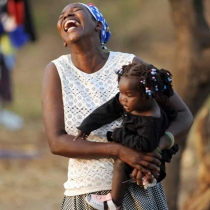





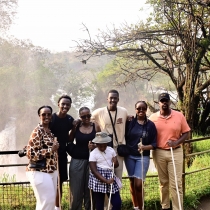

















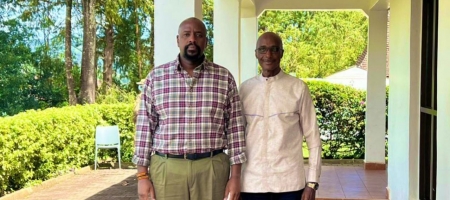
Join the conversation